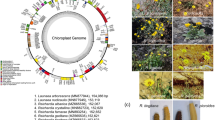Abstract.
The morphologically uniform species Gonium pectorale is a colonial green flagellate of worldwide distribution. The affinities of 25 isolates from 18 sites on five continents were assessed by both DNA sequence comparisons and sexual compatibility. Complete sequences were obtained (i) for the internal transcribed spacer ITS-1 and ITS-2 regions of ribosomal DNA and (ii) for each of three single-copy spliceosomal introns, two in a small G protein and one in the actin gene. ITS sequences appeared to homogenize sufficiently rapidly to behave as a single copy gene. Intron sequence differences between isolates in this species reached nucleotide substitution saturation, while ITS sequences did not. Parsimony and evolutionary distance analysis of the two types of DNA data gave essentially the same tree conformation. By all these criteria, the group of G. pectorale isolates fell into two main clades, A and B. Clade A, with isolates from four continents, was comprised of four subclades of quite closely related isolates, plus one strain of ambiguous affinity. Clade B was comprised of two subclades represented by South African and South American isolates, respectively; thus, only subclades of clade B showed geographical localization. With respect to mating, all isolates except one homothallic strain and one apparently sterile strain fell into either one or the other of two mating types. Pairings in all possible combinations revealed that isolates from the same site formed abundant zygotes, which germinated to produce new, sexually active organisms. Zygotes were also formed in many pairings of other combinations, including crosses of clade A with clade B organisms, but none of the latter produced viable germlings. The ability to mate and produce viable progeny that were themselves capable of sexual reproduction was restricted to members of subclades established on the basis of DNA sequence similarities. Thus, the grades of difference in both nuclear intron sequences and rDNA ITS sequences paralleled those observed in the sexual analysis.
Similar content being viewed by others
Author information
Authors and Affiliations
Additional information
Received: 9 March 1998 / Accepted: 1 June 1998
Rights and permissions
About this article
Cite this article
Fabry, S., Köhler, A. & Coleman, A. Intraspecies Analysis: Comparison of ITS Sequence Data and Gene Intron Sequence Data with Breeding Data for a Worldwide Collection of Gonium pectorale . J Mol Evol 48, 94–101 (1999). https://doi.org/10.1007/PL00006449
Issue Date:
DOI: https://doi.org/10.1007/PL00006449




